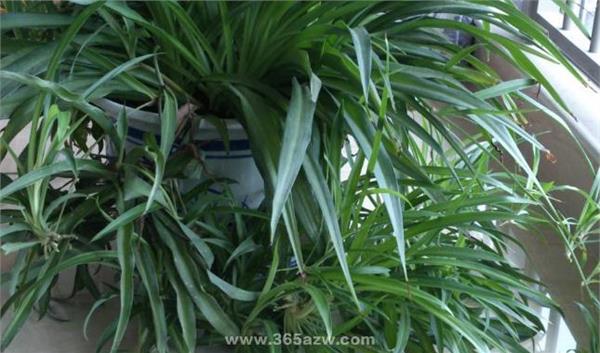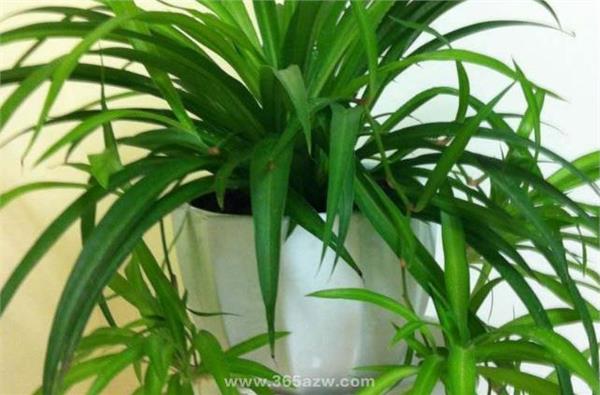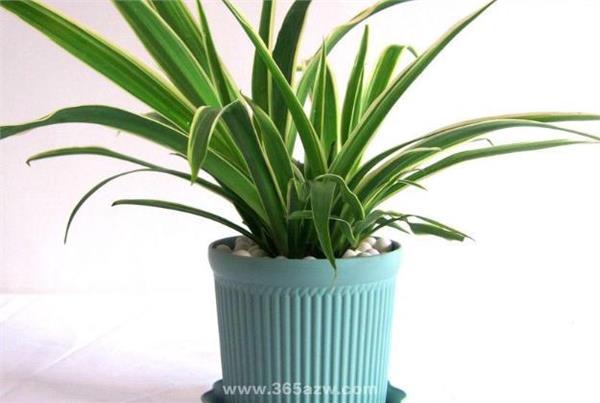The cause of yellowing of the leaves of Cymbidium and its solution
Chlorophytum in the breeding process will appear yellow leaves phenomenon. Today, let's briefly introduce the causes and treatment methods of yellow leaves of spider orchid. Let's take a look together.

Introduction to Chlorophytum
Chlorophytum like warm and humid, semi-shady environment, it is adaptable, more drought-resistant, but not very cold. The optimum temperature for growth is 15-25℃, and the overwintering temperature is 5℃. It grows fastest when the temperature is 20-24℃, and stops growing above 30℃. Chlorophytum has requirements for temperature, so we should pay more attention to it in the cultivation process. Chlorophytum does not choose soil, in good drainage, loose fertile sandy soil growth better. Chlorophytum has low requirements for soil. Chlorophytum requirements for light is not strict, generally suitable for growth in moderate light conditions, but also resistant to weak light. Of course, he couldn't expose himself to the sun often.

Causes and treatment of yellow leaves of spider orchid
1, improper fertilization: excessive fertilization causes yellow leaves, fertilization exceeds the needs of the plant, the leaves are bright and uneven at the beginning, the roots rot, and the leaves are yellow. Treatment methods: should stop fertilization, more irrigation water, or turn the root basin clean, replace the new soil.
2. Nutrient loss: all kinds of nutrients contained in the pot soil have been exhausted, the three elements of nitrogen, phosphorus and potassium have not been supplemented in time, the plants lack nutrients, and the leaves appear yellow and thin. Treatment methods: should be replaced in a timely manner fertile loam and alum fertilizer irrigation.
3, insufficient sunlight: although the spider orchid is a semi-negative flower, but at least four hours of astigmatism should be seen every day, otherwise the chlorophyll will decrease and the leaves will turn yellow. Treatment method: should take free time every day to put the spider plant in the sun for a few hours, but not too much exposure in the sun.
4. Poor air permeability and water permeability of basin soil: long-term accumulation of water in basin soil is not dry, and root respiration is difficult, resulting in yellow leaves. Treatment method: should be timely loose soil and control moisture. Fifth, long-term irrigation is impervious. The root of spider orchid loses water, and the lower old leaves turn yellow. Water should be poured thoroughly to keep the basin soil warm and moist.

Tips for Chlorophytum Maintenance
Chlorophyll-like semi-shade environment, spring and autumn should avoid strong sunlight direct sun, summer sunlight is particularly strong, only see some oblique light in the morning and evening, during the day need to cover 50%-70% of the sun, otherwise it will make the tip of the leaf dry, especially the flower variety, more afraid of strong sunlight, Phnom Penh Chlorophyll-like in the weak light will grow more beautiful, yellow Phnom Penh more obvious, leaves more shiny. But winter should make it see more sunshine, in order to keep the leaves tender green. Family potted plants should be placed in the south window, otherwise the leaves will lose luster and even wither. When conditions permit, it is best to rotate the pot about 15° in a fixed direction every week to ensure that the spider droops to the same extent.

Cut off yellow leaves at any time. May turn over the basin once every March, cuts off the old root, the rotten root and the redundant fibrous root. Cutting off some of the old leaves in the early and middle of May will promote the germination of more new leaves and small spider plants. The root system of spider orchid is quite developed. After breeding for a period of time, the flowerpot should be replaced in time to avoid root accumulation, causing yellow leaves and withering of spider orchid.
- Prev

Ornamental characteristics of longevity flowers in palace lanterns methods of propagation of longevity flowers
Ornamental characteristics of longevity flowers in palace lanterns methods of propagation of longevity flowers
- Next

How should lipstick orchids be cultured?
How should lipstick orchids be cultured?
Related
- Wuhan Hospital Iron Tree Blooming Result Was Instantly Frightened by the Gardener Master
- Which variety of camellia is the most fragrant and best? Which one do you like best?
- What is the small blue coat, the breeding methods and matters needing attention of the succulent plant
- Dormancy time and maintenance management of succulent plants during dormancy
- Minas succulent how to raise, Minas succulent plant pictures
- What are the varieties of winter succulent plants
- How to raise succulent plants in twelve rolls? let's take a look at some experience of breeding twelve rolls.
- Attention should be paid to water control for succulent plants during dormant period (winter and summer)
- Watering experience of twelve rolls of succulent plants
- Techniques for fertilizing succulent plants. An article will let you know how to fertilize succulent plants.

